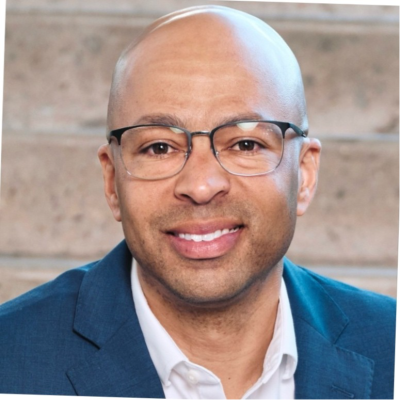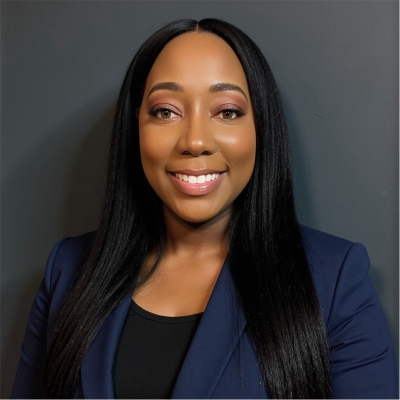Main Day One: Tuesday, December 9, 2025
8:00 am - 8:50 am
Registration & Networking Breakfast
8:50 am - 9:00 am
Opening Remarks
9:00 am - 9:30 am
Skills-Based Reality Check: What Works, What Doesn’t, and What’s Worth Doing Anyway
Diego Rodriguez Richmond -
Head of HR Shared Services Americas,
Huntsman Corporation
Harini Chellappa - Sr Director, People Operations & Digital Solutions, Okta
Rehanne Allen - Sr. Director, HR Technology & Operations, Epiq
If you’re skeptical about the skills-based organization model—you’re not alone. This session strips away the buzzwords and gets real about what it actually takes to build skills into HR Shared Services. You’ll hear how organizations are capturing skills (with mixed results), what they’re doing with that data (when they can), and how it’s playing out in day-to-day HRSS workflows.
We’ll explore:
- Why getting employees to input skills is harder than it looks
- What to do with skills data once you have it (beyond a nice dashboard)
- Where HRSS can apply a skills-based lens—routing, career pathing, upskilling—and where it falls flat
Harini Chellappa
Sr Director, People Operations & Digital SolutionsOkta
9:30 am - 9:50 am
Open Discussion Period/ Interactive Q&A
9:50 am - 10:20 am
No Budget, No Problem — Practical Fixes to Supercharge Your Self-Service
Ashley Diggs -
Manager- Employee Experience Center,
Premier Health Partners
Self-service is supposed to make life easier—for employees and HRSS teams alike. But when you’re stuck with outdated portals, poor search, and no budget for fancy upgrades, it can feel like a lost cause. This workshop flips that narrative. You’ll learn how to diagnose what’s actually killing your self-service usage (hint: it’s not always the tech), and uncover practical, low-cost improvements that can make your tools work harder. We’ll walk through how to fix bad search UX without buying a new system, how to make content more contextual and findable, and how to drive adoption even if your portal is clunky.
- Diagnose common issues that cause self-service tools to underperform—without blaming the platform
- Learn no-cost fixes to improve search relevance, content structure, and usability in legacy systems
- Discover creative tactics to promote self-service adoption using internal channels like Slack, email, or kiosks
10:20 am - 10:40 am
Open Discussion Period/ Interactive Q&A
10:40 am - 11:10 am
Networking Break
11:10 am - 11:40 am
Panel: What ‘Good’ Looks Like: Real-World Process Wins from HRSS Leaders
Lyndsey Taylor -
Global Head of HR Operations and Transformation,
Brooks Automation
Trey Greenwood - HR Service Center Director, Texas Health Resources
Moe Wilkerson - VP, HR Service Delivery, Pacific Gas & Electric
Behind every smooth employee experience is a shared services process that someone fought hard to fix. In this showcase-style session, you’ll hear how leading organizations have reimagined high-impact HR processes—not through massive overhauls, but through smart design, targeted automation, and human-first thinking.
We’ll break down the “before and after” of one core process (e.g., onboarding, payroll, case triage, mobility), showing how changes in workflow, ownership, technology, or service delivery model drove measurable improvements in speed, satisfaction, and service quality.
What We’ll Cover:
- What triggered the change (and what didn’t work the first time)
- How success was measured—beyond just speed or cost
- What the redesign unlocked: fewer handoffs, better self-service, or higher NPS
- Lessons you can apply to your own team—no matter your tools or budget
11:40 am - 12:00 pm
Open Discussion Period/ Interactive Q&A
12:00 pm - 12:30 pm
The Leadership Mindset Behind Successful Change
Pablo Pérez-Duarte -
Learning Development & Talent Management Head,
Constellation brands
In this 30-minute session, we’ll break down the essentials of effective change management and explore the leadership behaviors that truly influence whether multinational teams move from resistance to adoption. Participants will learn the fundamentals of the ADKAR methodology and gain a clear understanding of the change curve, along with the real-world dynamics leaders face when guiding people through disruption. Through a practical, engaging discussion, we’ll highlight the most common obstacles leaders encounter during transformation, how to address them, and why change management remains one of the most underestimated responsibilities at the senior level. Attendees will walk away with actionable insights on building a change-ready culture, strengthening communication across teams, and adopting a leadership mindset that drives lasting, measurable, and sustainable transformation across the organization.
12:30 pm - 12:50 pm
Open Discussion Period/ Interactive Q&A
12:50 pm - 1:50 pm
Networking Lunch
1:50 pm - 3:25 pm
Break Into Interactive Discussion Groups
Looking for engaging conversations and networking opportunities? Participate in our Interactive Discussion Groups (IDGs)! These are dynamic, 40-minute sessions designed to foster in-depth discussions on key topics. You'll have the chance to join two different IDGs, choosing your preferred topics when you arrive. Each group, with 10-20 participants, will be led by a moderator who will kick off the conversation with several prepared questions, encouraging everyone to share their insights and perspectives.
Interactive Discussion Groups (IDG's)
IDG 1
1:50 pm - 3:25 pm What Blind Spots Are Lurking in Our Service Model? Rick Bridger - Sr. Director, HR Shared Services and Operations, BrandSafwayTony Zuanich - SVP of Sales & Marketing, Tabulera
IDG 2
1:50 pm - 3:25 pm Why Aren’t We Actually Saving Time with All This Automation? Trey Greenwood - HR Service Center Director, Texas Health ResourcesIDG 3
1:50 pm - 3:25 pm Are We Spending More Time Explaining Our Value Than Delivering It? Lyndsey Taylor - Global Head of HR Operations and Transformation, Brooks AutomationIDG's are two 45-minute rounds of discussion with 10-20 attendees each round. Attendees will choose which IDG to participate in onsite, and then after the first round, switch to another IDG of their choice.
3:25 pm - 3:55 pm
Mini HR Hot Take Hustle Intro
Get ready for 30 minutes of fast-moving, opinion-sparking fun. In this mini version of our signature session, we’ll throw out bold statements about HR trends, tech, and workplace culture—and you’ll vote with your feet. Agree? Disagree? Somewhere in between? Move to your spot and join a rapid-fire group chat to hear where your peers stand (and maybe rethink where you do).
No slides. No pressure. Just energy, insights, and a few great hot takes to carry into the rest of your day.
3:55 pm - 4:30 pm
Networking Break
4:30 pm - 5:00 pm
Debate: Where Should HR Shared Services Sit in the Organization?
Charnay Mothershed -
US People Operations Manager,
ASML
Chaitanya Jayanti - Information Services Manager, Northwestern Memorial HealthCare
Lyndsey Taylor - Global Head of HR Operations and Transformation, Brooks Automation
Reporting lines shape everything—from your budget and influence to how fast you can get things done. So where should HR Shared Services live? Should it stay close to HR to champion the employee experience? Sit under Finance or the COO for discipline and process alignment? Or be fully embedded in GBS for cross-functional scale?
In this lively end-of-day debate, leaders from organizations with very different structures will make the case for where HRSS belongs—and how that choice impacts culture, strategy, and results. Expect passionate arguments, real-world examples, and honest takes on what works (and what drives teams nuts).
What We’ll Explore:
- How reporting to HR, Finance, GBS, or other functions impacts service delivery
- Why structure isn’t just operational—it’s political, cultural, and strategic
- How to influence structure when you can’t control it—and navigate it when you must














